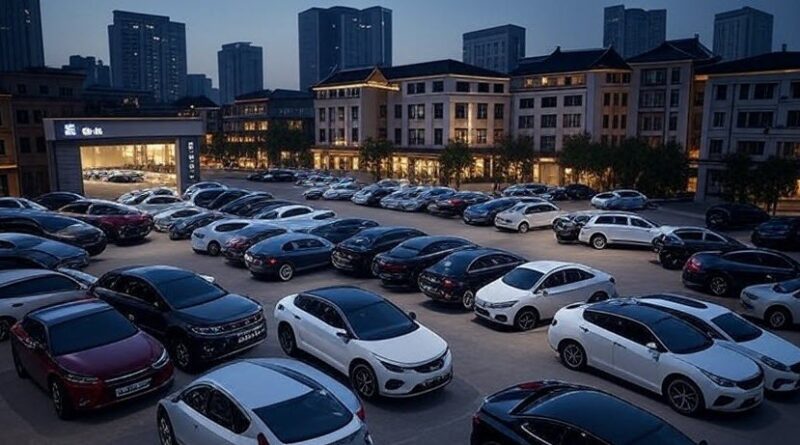China’s July Car Sales Lose Momentum as Hybrid Market Softens
China’s July Car Sales Lose growth as Hybrid Market Softens slowed in July 2025, with a drop in hybrid vehicle demand suggesting a shift in buyer preferences. Data from the China Association of Automobile Manufacturers (CAAM) shows overall passenger vehicle sales rose by just 2.1% compared to the same month last year. This is a clear slowdown from the double-digit growth seen earlier in 2025. While electric vehicle (EV) sales remained steady, the once fast-growing hybrid segment lost momentum as competition increased, subsidies changed, and full EV makers slashed prices.
Key Numbers for July 2025
According to CAAM figures:
- Total passenger car sales: 1.77 million units (up 2.1% year on year)
- Battery electric vehicles (BEVs): 620,000 units (up 6%)
- Plug-in hybrid electric vehicles (PHEVs): 290,000 units (down 4%)
- Conventional petrol vehicles: 860,000 units (up 1.5%)
This is the slowest monthly growth since early 2024 and highlights cooling demand for hybrids after two years of strong gains.
Why Hybrid Demand Is Slowing
Several reasons explain the weaker hybrid sales:
1. Price competition from EV makers
BYD, Tesla, NIO and other brands have launched aggressive discounts and new low-priced EVs, narrowing the cost gap between pure EVs and hybrids.
2. Changes in subsidies
Government incentives that supported hybrids have been reduced in some regions. More funding is now going into full EV adoption and expanding charging networks.
3. Changing consumer attitudes
As charging infrastructure grows, more drivers see full EVs as practical for everyday use, reducing hybrids’ appeal as a halfway option.
4. Export focus
Some Chinese hybrid producers are concentrating on overseas markets, pulling back on domestic promotions.
BYD, Li Auto and Other Market Leaders
BYD, China’s top carmaker, saw BEV sales rise in July but hybrid sales stay flat. Li Auto, known for its extended-range hybrids, posted its first month-on-month decline in more than a year. Geely and Great Wall Motors have been shifting production toward BEVs to align with demand.
Wider Market Context
The July figures follow a strong first half of 2025, when the market recovered from earlier economic concerns. However, rising household debt, cautious consumer spending, and an EV price war have created tougher conditions.
Exports remain a highlight, with Chinese automakers shipping record volumes of vehicles — especially EVs — to Europe, Southeast Asia and South America.
Industry Outlook
Hybrid sales are expected to stay weak through the rest of 2025, while full EV demand should remain solid thanks to:
- Lower battery costs
- Faster charging network expansion
- A wider choice of smaller, affordable EVs for city buyers
The bigger challenge will be profitability. Deep price cuts boost sales but put pressure on margins, especially for brands without the production scale of BYD or Tesla.
Final Thoughts
China’s July car sales numbers show a market in transition. Hybrids are losing steam, while EVs continue to drive the industry forward. For automakers, the main task will be managing short-term sales goals while investing for a fully electric future in an increasingly competitive and price-sensitive environment.
Buying a used VW. Buying used vauxhall, BMW, Jaguar, Ford, Volvo, Range rover, Bentley, Aston Martin, Porsche, Ferrari, Lamborghini, Maserati, Hyundai, Tesla, Honda, Pagani

